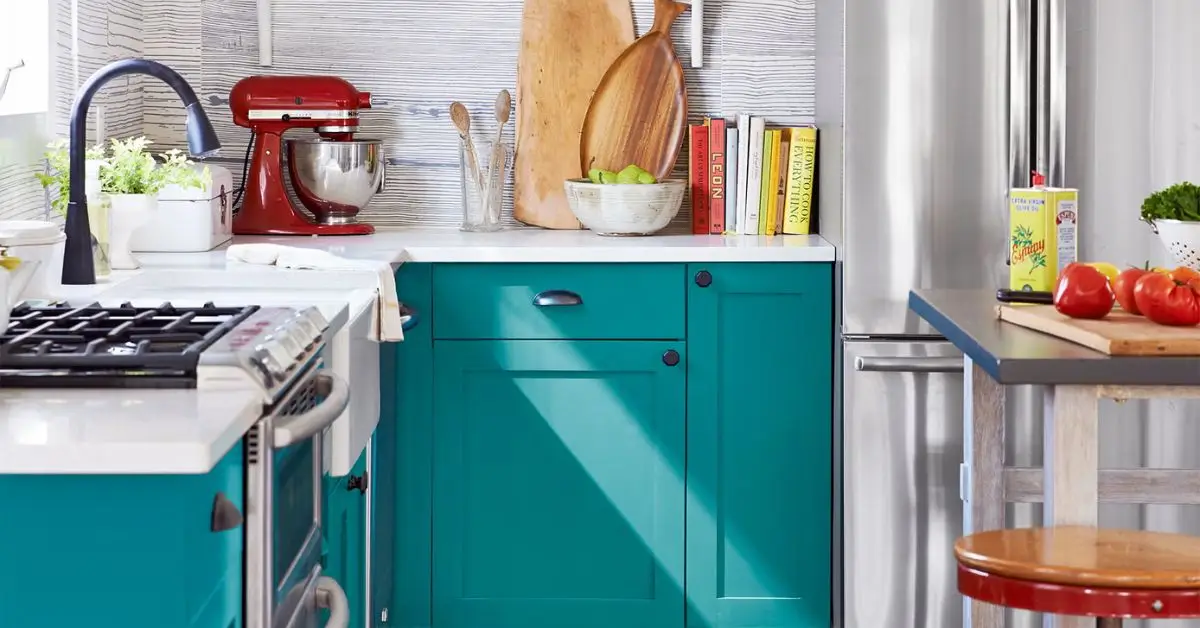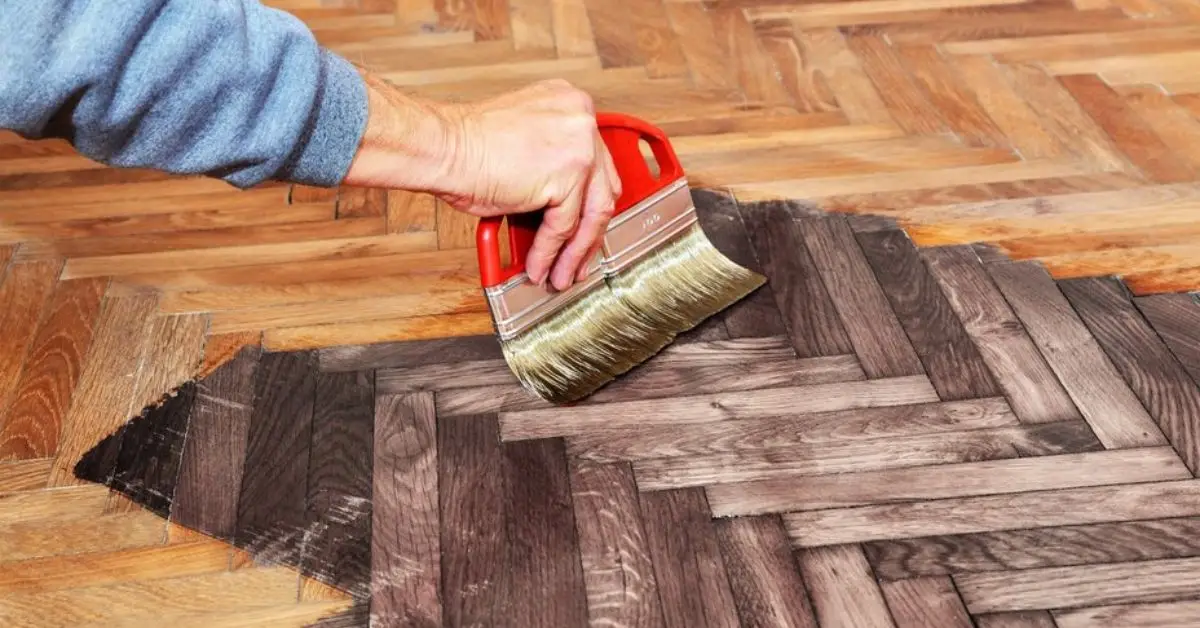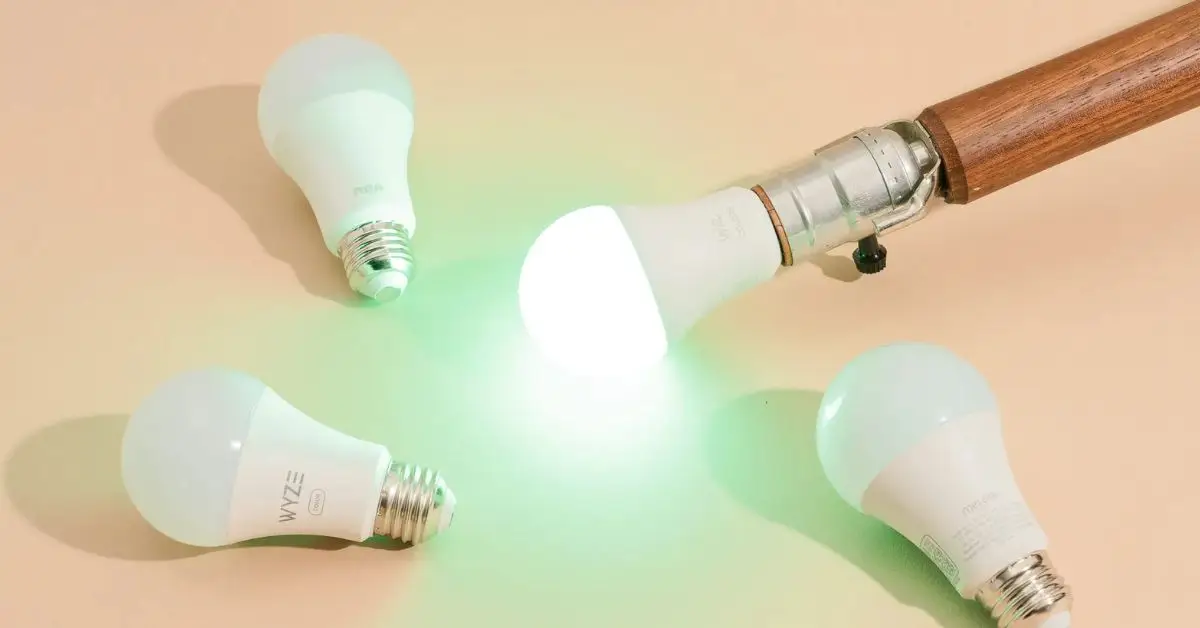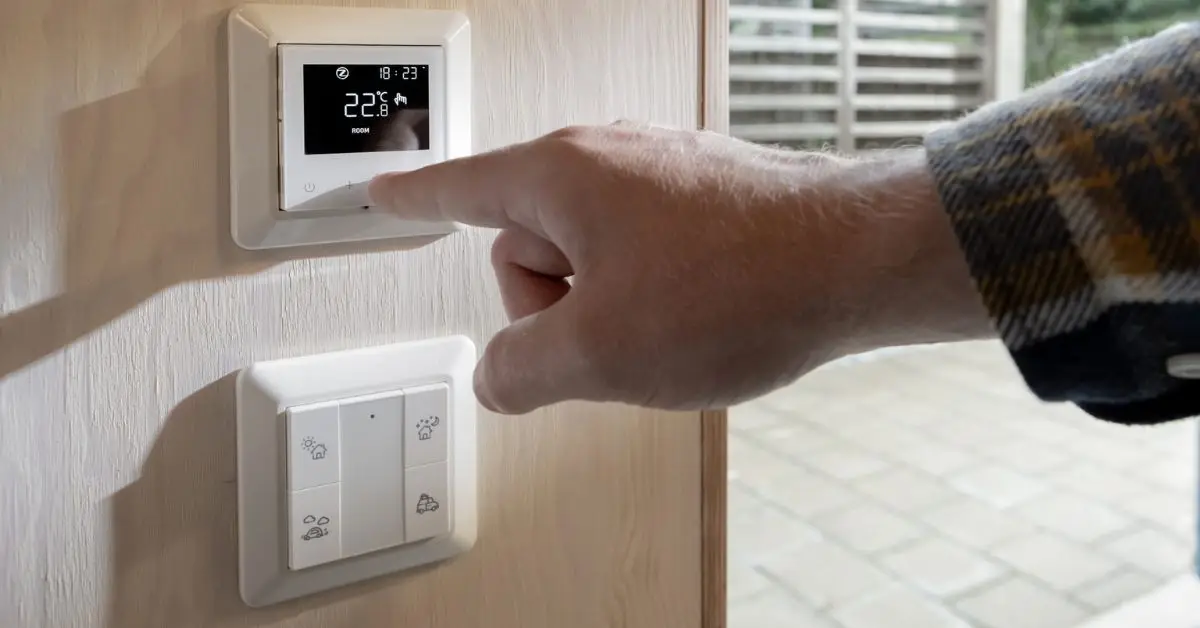32 Affordable Home Upgrades You Can Actually Do Yourself
If your home feels a little outdated, cramped, or just plain boring — you’re not alone. Whether you’re a renter trying to make a space feel like yours, or a homeowner looking to boost resale value without spending thousands, DIY home upgrades are your best friend. The right project can refresh a room, add function, and even increase your home’s value — all on a budget.
In this article, I’ll walk you through 32 budget-friendly DIY upgrades that are easy to tackle, beginner-friendly, and genuinely worth your time. No fluff. Just real fixes that actually make your space better — and make you feel better living in it.
Why Small DIY Home Upgrades Are a Big Deal
Let’s be real — not everyone has a $10,000 budget for a full home makeover. But you also don’t want to live in a space that feels stuck in 2006. The good news? You don’t need major renovations to make your home feel fresh, updated, and even more valuable.
Over the past 20+ years, I’ve seen how simple DIY upgrades — the kind you can knock out on a Saturday afternoon — can totally transform how your home looks and feels. And most of them cost less than what you’d spend on takeout for the week.
This guide isn’t a list of aesthetic-only trends. It’s packed with practical, budget-friendly home upgrades you can actually do, even if you don’t consider yourself “handy.” Whether you’re updating your starter home, adding value before a sale, or just tired of staring at the same boring bathroom — you’ll find ideas here that make a real difference.
And no, you don’t need to shop at Restoration Hardware or have a garage full of tools. Just a little time, a little effort, and the right plan.
Let’s start with the quickest, cheapest wins first. You’ll be amazed what a few small changes can do.
What’s the one part of your home that drives you nuts every time you see it? Got it in mind? Great — we’re starting there next.
Plan Smart Before You Start
Before you grab a paintbrush or start ripping out tile, slow down for a minute. A lot of DIY mistakes happen not because someone isn’t “handy,” but because they jump in without a plan.
Start by picking one project at a time. It’s tempting to do five things at once, but that’s how unfinished corners, mismatched paint, and frustration build up. Choose a small, contained project — like painting one wall or upgrading light switches — and finish it fully.
Budget it realistically. Just because something is “budget-friendly” doesn’t mean it’s free. Look at what tools you already have. Can you borrow from a neighbor? Will you need special materials like tile spacers or primer?
Check your calendar. Some upgrades need dry weather (outdoor painting, deck sealing), others work better in cooler months (indoor caulking, attic insulation). If you’re working weekends only, make sure the task is doable in that window. It’s way more satisfying to wrap up Sunday evening with a clean finish than a half-done mess.
And don’t skip safety. Gloves, goggles, ventilation — this stuff matters. Especially with sanding, chemical strippers, or anything involving electricals. A $10 safety kit can save you a lot more than a hospital co-pay.
Good planning doesn’t slow you down — it makes your work smoother and more satisfying.
Quick Wins Under $25
Let’s kick things off with low-effort, low-cost upgrades that can instantly make your space feel newer. These are perfect if you’re nervous about starting or short on time.
1. Swap out old switch plates and outlet covers.

You’d be surprised how much cleaner a room looks when the grimy beige plastic is replaced with fresh white or matte black plates. It’s subtle, but your eyes notice.
2. Update soft goods.
New pillow covers, a bathroom rug, or even a bold shower curtain can shift the whole tone of a room. Think color pops and modern textures. You can do this without touching paint or hardware.
3. DIY mini gallery wall.
Print a few black-and-white photos at home, grab cheap IKEA or Dollar Tree frames, and create a curated corner. It’s not just décor — it feels personal.
4. Repurpose everyday items.
Turn old tin cans into herb planters for your kitchen window. Use an old ladder as a towel rack. TikTok and Reddit are full of clever reuse ideas that cost zero dollars and actually look good.
These are great starter projects because they build your confidence. Once you knock out a few, you’ll be ready to level up.
Paint & Hardware = Big Impact for Cheap
If there’s one upgrade that punches far above its price tag, it’s paint. Walls, cabinets, furniture — a fresh coat changes the energy of a space instantly.
5. Paint your walls — or even just one.
A bold accent wall or a crisp neutral tone can make the room feel completely different. Stick to flat or eggshell for living areas, satin or semi-gloss for kitchens and baths.
6. Cabinet facelift? Skip the install. Paint instead.

Don’t underestimate what painted cabinets can do. With proper prep (clean, sand, prime), even older cabinets can look like new. Add fresh hardware and suddenly it feels like a $5,000 remodel — for under $100.
7. Replace or repaint hardware.
Old knobs and drawer pulls age a space. Brushed brass, matte black, or modern nickel finishes make a big difference. And if new hardware is out of budget, you can spray paint the old ones with a good primer + finish combo.
8. Want to go further? Try peel-and-stick wallpaper or tile.
Use it on a backsplash, entryway wall, or inside a closet to add texture and interest without commitment.
Paint and hardware projects are popular for a reason — they’re cheap, visual, and satisfying. Just be patient with prep. Rushing it leads to sloppy edges and chipped results.
Flooring & Surface Fixes That Don’t Break the Bank
Flooring is where people often panic — they think it’s expensive or permanent. But you can make real changes without ripping up your floors or calling a contractor.
9. Power wash your porch, patio, or driveway.
If you’ve got concrete or outdoor tile, borrow a pressure washer and blast away years of grime. It makes the surface look almost new again, and it’s incredibly satisfying. Some local hardware stores rent them out by the day.
10. Use peel-and-stick vinyl tiles or planks.
Today’s peel-and-stick flooring is nothing like the cheap stuff from 15 years ago. It’s water-resistant, easy to cut, and great for rentals or starter homes. Ideal for bathrooms, laundry rooms, or basement floors. You don’t need grout or glue — just clean the surface well and go slow.
11. Paint your existing floors.

Yes, really. If you’ve got old wood, linoleum, or even concrete, there are paints and sealers made specifically for floors. Go for soft neutral tones or stencil a pattern for a tile-like look. It’s a weekend job with high visual payoff.
12. Upgrade grout or re-seal tile.
Dirty or crumbling grout can make even decent tile look old. Use a grout pen to refresh color or re-grout small sections yourself. It’s tedious but doable — and makes your floors or backsplashes look brand new.
These upgrades fix tired, overlooked surfaces and create the feeling of “new” without the chaos of demo.
Add Greenery & Texture for Instant Warmth
When a home feels cold, sterile, or just “off,” the problem is often a lack of texture or nature. You don’t need new furniture — just smart, small layering.
13. Bring in low-maintenance indoor plants.
Snake plant, pothos, or a ZZ plant are perfect for beginners. No green thumb required. They clean the air, soften harsh corners, and add life — literally — to your space.
14. Layer rugs for depth and comfort.
Got hardwood or laminate? Add a cozy area rug in the living room or runner in the hallway. Mix textures: jute over sisal, or a shag on top of a flatweave. Look for sales on Wayfair, Amazon, or HomeGoods — you don’t need a $600 rug.
15. Upgrade your throw game.
Blankets, pillows, and fabric baskets make a space feel intentional, not thrown together. Use muted colors if your furniture is bold — or go for bold accessories if everything else is neutral.
16. Use vertical space for personality.
Floating shelves, hanging plants, or even an IKEA pegboard can fill up a blank wall with function and style.
You don’t have to redo your layout to feel more at home. Just a few warm, organic touches can shift the mood from “temporary” to “this is mine.”
Fix the Lighting — It Changes Everything
Bad lighting makes even a well-decorated space feel dull or outdated. The good news is: lighting is one of the easiest upgrades to DIY — and one of the most transformative.
17. Swap out old fixtures.
You can replace a ceiling light or pendant with just a screwdriver and basic wire knowledge. Don’t touch anything you’re unsure of, but for dry areas and simple switches, it’s very beginner-friendly. Stick to warm LED bulbs (2700K–3000K) for a soft, welcoming glow.
18. Add stick-on lighting where needed.
Closets, under cabinets, stairways — anywhere you need light but don’t want to hardwire it. Battery-powered puck lights or LED strips make a big difference and cost under $20.
19. Reposition your lamps.
Instead of everything overhead, layer light: one lamp near the sofa, another in the corner, maybe a wall sconce or reading light by the bed. It feels intentional and cozy.
20. Upgrade the look with smart bulbs or dimmers.

Want better ambiance without rewiring? Use smart bulbs you can control with your phone. Or install dimmer switches — they’re not hard and they let you shift from “work mode” to “movie night” instantly.
Lighting sets the tone. When it’s warm, layered, and adjustable, your home just feels better — no matter the furniture.
Easy Curb Appeal Projects That Actually Matter
The outside of your home sets the tone — for guests, buyers, and honestly, for how you feel pulling into the driveway. Curb appeal doesn’t have to mean new siding or landscaping crews. Some of the best upgrades cost less than a tank of gas.
21. Paint your front door.
A bold, clean front door color changes the entire exterior vibe. Classic black, navy, red, or sage green all pop without going overboard. Don’t forget to wipe down the trim and hardware too — grime builds up fast.
22. Add a new doormat and house numbers.
It sounds basic, but fresh house numbers and a modern mat send the message: someone cares about this place. Choose numbers in a modern font and mount them where they’re visible and balanced.
23. Tidy the front yard — hard.
Weeds, overgrown shrubs, or a patchy lawn can ruin an otherwise fine home. Spend a Saturday trimming, raking, mulching, and planting a few low-maintenance flowers like marigolds or petunias. It doesn’t take much.
24. Upgrade your outdoor lighting.
Solar path lights, new porch sconces, or even battery-powered lanterns add warmth and safety. You don’t have to hardwire anything to make your home glow at night.
These changes are especially helpful if you’re planning to sell soon — but even if you’re not, you’ll feel a little more proud every time you walk up to your door.
Eco-Friendly Upgrades That Save Money Over Time
If you’re going to improve your space, why not also cut energy bills and reduce waste while you’re at it? Green upgrades aren’t just good for the planet — they can also make your home more comfortable and efficient.
25. Seal the gaps.
Use weather stripping and door sweeps to stop drafts. Seal up attic doors, basement cracks, and old windows with foam or caulk.
While you’re sealing things up, it’s also worth learning how to stop bats from invading your home — especially if you’ve noticed any odd scratching noises in the attic or garage.
26. Swap out bulbs and fixtures.
LED bulbs use 75% less energy than old incandescents — and last 25 times longer. If you haven’t already switched, now’s the time. Bonus: you can often find utility rebates for doing this.
27. Install smart thermostats or plugs.

Even if you don’t go full smart-home, a basic programmable thermostat can help you run your HVAC more efficiently. Smart plugs are great too — they let you control lamps and devices remotely, reducing waste.
28. Use recycled or secondhand materials.
Check Facebook Marketplace, Habitat for Humanity ReStores, or Craigslist for leftover tile, paint, wood, or tools. Not only do you save money, you keep good materials out of the landfill.
Sustainable doesn’t have to mean expensive. Just a few smart habits and upgrades can make your home cheaper to run — and easier to feel good about.
Simple DIY Projects That Actually Add Resale Value
Not every DIY upgrade boosts your home’s value. But some absolutely do — and they’re usually not the ones people think. Based on data from Investopedia and the National Association of Realtors, here’s where your effort really pays off:
29. Re-grout your bathroom or kitchen.
Cracked, stained grout is a red flag for buyers. It suggests water damage or neglect. Fresh, clean grout (even just using a grout pen) makes the whole room look newer and better maintained.
30. Paint outdated trim and baseboards.
This one’s often ignored, but if your baseboards are dinged up or yellowed, a quick sand and paint job can clean up the entire room. Use bright white semi-gloss for a modern, crisp look.
31. Restore old hardwood floors.
No, you don’t need to refinish them completely. Sometimes just a deep clean and polish with a wood-restoring product like Bona or Rejuvenate can bring back the shine and hide wear.
32. Install basic storage solutions.
Add simple closet organizers, wall hooks, or floating shelves. Buyers love functional storage, and these touches make small spaces feel more livable.
Another space-saving win? Consider installing a simple laundry chute — it’s easier than you’d think and adds convenience and resale value, especially in multi-level homes.
These upgrades show that the home has been cared for — and that matters. They help with resale, but more importantly, they help with pride of ownership right now.
Real People, Real DIY Wins (And a Few Expert Tricks Too)
Sometimes the best inspiration doesn’t come from a magazine — it comes from someone just like you, who rolled up their sleeves and figured it out. These real-world stories and expert-backed ideas prove you don’t need a big budget or a contractor to make meaningful changes. Some homeowners are even taking it further by using glulam beams to upgrade your space — offering a modern, architectural feel without traditional framing costs.
A $1,500 hallway redo that went viral
A couple in the U.K. shared their hallway transformation on TikTok: fresh paint, lighting, and IKEA molding turned a narrow, dim space into a jaw-dropping entry — and it got over 13 million views. They did it all themselves for about $1,500.
Reddit’s top small-space upgrades
In a popular thread on r/HomeImprovement, users shared dozens of low-cost changes that made a big impact: swapping yellowed switch plates, painting tile floors, upgrading porch lights. One user said, “I spent less than $100 and my entryway feels like a new house.”
TikTok hacks that actually hold up
Not all DIY TikToks are fluff. In fact, Architectural Digest rounded up top creator-backed ideas like using peel-and-stick wallpaper to cover ugly backsplash, painting outdated ceiling fans instead of replacing them, and framing builder-grade mirrors with wood trim. These are fast, renter-safe, and repeatable.
Personal DIY win: power washing changed everything
I’ve worked with homeowners who felt stuck with a dingy exterior — until they rented a power washer for the weekend. Sidewalks, decks, and siding looked five years younger by Monday. It’s one of the highest-ROI DIYs you can do with just your time.
The takeaway?
You don’t need perfect skills — just the willingness to try, and the clarity to start small. If others can do it with limited time, tight budgets, and no formal training, so can you.
Tools & Materials You’ll Actually Need (Not a Contractor’s Toolbox)
You don’t need a full garage workshop to pull off most DIY upgrades. In fact, a small, well-thought-out toolkit can cover almost everything in this guide. Whether you’re painting, swapping hardware, or hanging shelves, here’s what I recommend having on hand:
Basic Tools
- Measuring tape — You’ll use this more than you think.
- Screwdrivers (flat + Phillips head) — For hardware, switch plates, fixtures.
- Hammer — For nails, anchors, or prying loose trim.
- Level — Crucial for shelves, frames, or anything mounted.
- Utility knife — Great for opening boxes, trimming peel-and-stick materials.
- Painter’s tape — Clean paint lines = professional finish.
- Putty knife + spackle — For small wall fixes before painting.
Paint & Surface Supplies
- Rollers + brushes — Use foam rollers for smooth surfaces like cabinets.
- Drop cloth or old sheet — Avoid that “oops” moment on your floors.
- Sandpaper (medium + fine grit) — For prepping furniture, trim, or walls.
- Primer + paint — Get sample sizes first if you’re unsure on color.
Lighting + Electrical (Basic)
- Voltage tester — Always check wires before touching them.
- Wire nuts + pliers — For simple fixture swaps.
- LED light bulbs (warm tone) — Better light = better room.
Affordable Materials to Keep in Stock
- Peel-and-stick wallpaper or backsplash — Easy transformation, no mess.
- New cabinet pulls or knobs — Modernize kitchens and baths in under an hour.
- Grout pen or grout caulk — Freshens tile in minutes.
- Weather stripping or door sweeps — Saves energy and comfort.
- Solar path lights — Upgrade curb appeal, no wiring needed.
Where to Shop Smart
- Facebook Marketplace / Craigslist — Often has unused tile, wood, or lighting for cheap or free.
- Habitat for Humanity ReStore — Great for discounted tools, doors, and fixtures.
- Home Depot / Lowe’s — For essentials, look for bulk packs and contractor discounts.
- Amazon / IKEA / Walmart — Budget-friendly options for décor, lighting, rugs, and hardware.
Pro Tip: Don’t buy everything at once. Start with what your first project needs, and slowly build your toolkit from there. The goal isn’t to collect stuff — it’s to get results.
Where to Go From Here (And What Not to Overthink)
Here’s the truth: your home doesn’t need to be perfect to feel better. You don’t need to fix everything. You just need to start somewhere — small, smart, and with a clear win in mind.
Pick one project from this list. Just one. Maybe it’s painting the front door. Swapping out cabinet knobs. Power washing the porch. Something that costs under $50 and can be done in an afternoon. When you finish it, notice how the space — and your mood — shifts.
Then build momentum.
Most of what holds people back isn’t time or budget — it’s decision fatigue. You get stuck thinking it has to be HGTV-level or nothing. That’s just not true. Real homes evolve one small upgrade at a time.
Need help figuring out where to begin?
Ask yourself: What space do I avoid the most? What part of the house makes me feel frustrated or embarrassed? Start there.
And if you’re stuck between a few ideas, remember this: the best DIY project is the one you’ll actually finish.
Your home doesn’t need a renovation budget to feel like yours. It just needs your hands on it, your eye guiding it, and a willingness to make progress — not perfection.
So…
What’s your first project going to be?
Want More DIY Ideas That Actually Work?
Visit Build Like New for smart, budget-friendly home upgrades, tools that make life easier, and real tips from people who’ve done it all themselves.
Disclaimer: The DIY projects and tips shared in this article are for general informational purposes only. Always follow safety guidelines, use proper tools, and consult a licensed professional when needed — especially for electrical, plumbing, or structural work. Results may vary based on your skill level and home condition.


